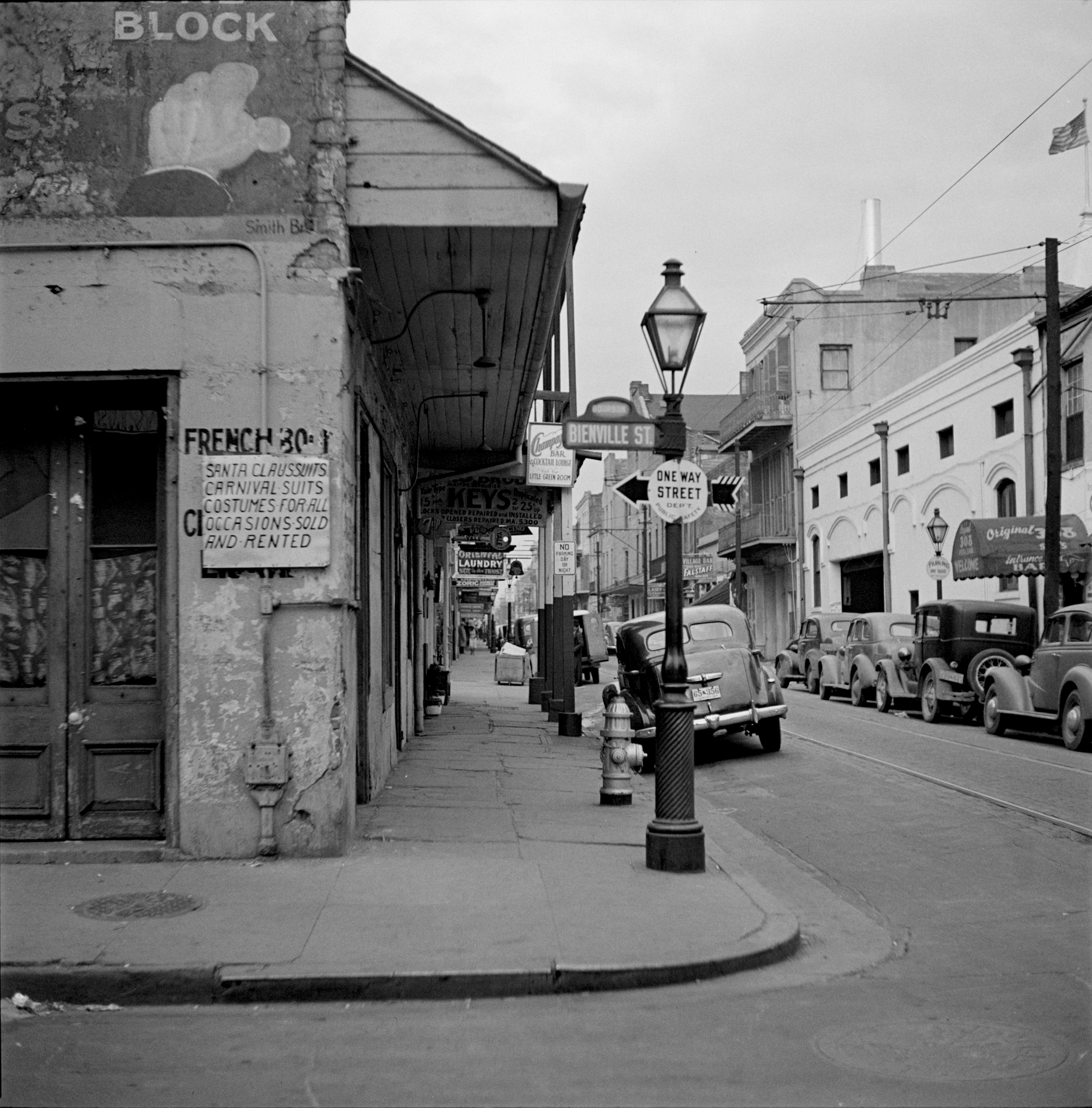Downtown New Orleans on:
[Wikipedia]
[Google]
[Amazon]

 In ,
In ,
 In the 19th century, much of New Orleans' downtown (downriver from Canal Street) was still predominantly
In the 19th century, much of New Orleans' downtown (downriver from Canal Street) was still predominantly 

 In ,
In , Louisiana
Louisiana , group=pronunciation (French: ''La Louisiane'') is a state in the Deep South and South Central regions of the United States. It is the 20th-smallest by area and the 25th most populous of the 50 U.S. states. Louisiana is bord ...
, United States, downtown has historically referred to neighborhoods along the Mississippi River
The Mississippi River is the List of longest rivers of the United States (by main stem), second-longest river and chief river of the second-largest Drainage system (geomorphology), drainage system in North America, second only to the Hudson B ...
, downriver (roughly northeast) from Canal Street – including the French Quarter, Tremé, Faubourg Marigny, Bywater, the 9th Ward
The Ninth Ward or 9th Ward is a distinctive region of New Orleans, Louisiana, which is located in the easternmost downriver portion of the city. It is geographically the largest of the 17 Wards of New Orleans. On the south, the Ninth Ward is bou ...
, and other neighborhood
A neighbourhood (British English, Irish English, Australian English and Canadian English) or neighborhood (American English; see spelling differences) is a geographically localised community within a larger city, town, suburb or rural area, ...
s. Contrary to the common usage of the term downtown
''Downtown'' is a term primarily used in North America by English speakers to refer to a city's sometimes commercial, cultural and often the historical, political and geographic heart. It is often synonymous with its central business district ...
in other cities, this historic application of the term excluded the New Orleans Central Business District. The term continues to be employed as it has been historically, although many younger people and migrants from other parts of the country will use "downtown" as it is used elsewhere; that is, to mean the Central Business District/Warehouse District area.History
 In the 19th century, much of New Orleans' downtown (downriver from Canal Street) was still predominantly
In the 19th century, much of New Orleans' downtown (downriver from Canal Street) was still predominantly Francophone
French became an international language in the Middle Ages, when the power of the Kingdom of France made it the second international language, alongside Latin. This status continued to grow into the 18th century, by which time French was the l ...
. Downtown hosted the city's French-speaking Creole communities. There was a traditional rivalry with the predominantly Anglophone uptown New Orleans on the other side of Canal Street. The broad median of Canal Street became known as the neutral ground, where partisans of the two sections of the city could meet for discussions and business without going into each other's territory. The city was for years divided into Downtown and Uptown.
Development of the low-lying Back of Town (the swamp and marsh extending northwards from the edge of development to the shores of Lake Pontchartrain
Lake Pontchartrain ( ) is an estuary located in southeastern Louisiana in the United States. It covers an area of with an average depth of . Some shipping channels are kept deeper through dredging. It is roughly oval in shape, about from w ...
) only began after 1900, as longstanding drainage issues were solved. While the downtown/uptown division of the city has sometimes been overstated (by the late 19th century there were already substantial numbers of people of francophone orientation living uptown, and of anglophone orientation living downtown), it continues to be a factor in New Orleans culture into the 21st century, marking, for example, the division of the Mardi Gras Indians into Downtown and Uptown tribes.
With the increasing development of the Back of Town in the years after World War II
World War II or the Second World War, often abbreviated as WWII or WW2, was a world war that lasted from 1939 to 1945. It involved the World War II by country, vast majority of the world's countries—including all of the great power ...
resulting in the mature districts of Lakeview and Gentilly, it became increasingly difficult to categorize neighborhoods as "Uptown" or "Downtown". The growth of New Orleans East, as well as suburban Jefferson Parish Jefferson may refer to:
Names
* Jefferson (surname)
* Jefferson (given name)
People
* Thomas Jefferson (1743–1826), third president of the United States
* Jefferson (footballer, born 1970), full name Jefferson Tomaz de Souza, Brazilian f ...
, further complicated the picture. By the 1990s, the terms had largely fallen out of use, with only the merest fraction of the population of Greater New Orleans
The New Orleans metropolitan area, designated the New Orleans–Metairie metropolitan statistical area by the U.S. Office of Management and Budget, or simply Greater New Orleans (french: Grande Nouvelle-Orléans, es, Gran Nueva Orleans), is a me ...
inhabiting the region once divided into Uptown and Downtown zones.Today, use of the word "downtown" will most likely be taken to mean the CBD/Warehouse District neighborhood (i.e., the area within the DDD's ambit), and the use of individual neighborhood names or wards has replaced the historic use of the term "downtown", although "uptown" has remained in use – albeit with a lower boundary, now stretching along the Pontchartrain Expressway rather than Canal Street.

Education
New Orleans Public Schools and various charter schools serve Downtown neighborhoods.See also
* New Orleans Downtown Development District * New Orleans Central Business District * Canal Street, New Orleans * Uptown New OrleansReferences
{{coord missing, New Orleans Neighborhoods in New Orleans History of New Orleans